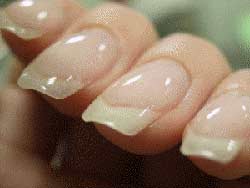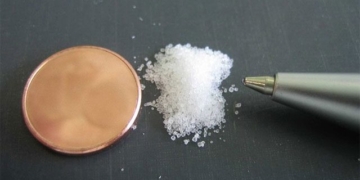Scientists have discovered that nail biopsy can reveal whether a person has osteoporosis, as both nails and bones contain a crucial connective substance that helps maintain their strength.
This research was conducted by scientists at the University of Limerick. They concluded that if the levels of this special connective substance in the nails are low, then the levels in the bones are likely to be low as well.
 |
| Nail biopsy can reveal osteoporosis (Photo: nail-company) |
This could be considered a simple and cost-effective method for detecting osteoporosis. The findings are expected to be widely published by the end of this year.
Osteoporosis is a very common condition, especially among the elderly, which weakens bones and can lead to fractures that are difficult to heal.
In the UK, one in three women is affected by osteoporosis, with the rate for men at one in twelve. It is estimated that approximately 200,000 people suffer fractures annually in this country, with over 40 fatalities occurring each day.
The idea for this new method arose from an incidental discovery made by a doctor. While caring for patients with osteoporosis, this doctor noticed that their nails were softer than usual.
Following this observation, Dr. Mark Towler from the University of Limerick was tasked with analyzing the composition of nails and bones to find answers. He collected samples of nails and bones from ten osteoporosis patients to compare with samples from ten healthy individuals.
Ultimately, he found that individuals with osteoporosis had lower levels of disulfide bonds (which are essential for linking one protein molecule to another) compared to those without the condition. (In nails, disulfide bonds help link keratin, while in bones, this substance connects collagen proteins.)
Additionally, scientists conducted research on 200 other individuals who had previously used bone scans for osteoporosis diagnosis. If someone was diagnosed with osteoporosis through this method, the scientists also discovered low levels of disulfide in their bones and nails.
Dr. Towler stated: “Many individuals typically undergo bone scans after menopause or following a period of smoking to detect osteoporosis for timely treatment. With this new method, people will no longer need to resort to such costly measures. They can simply send their nail samples to the hospital and still receive accurate results.”
Scientists are currently seeking funding to conduct further studies aimed at determining the exact level of disulfide in bones that would classify someone as having osteoporosis and the threshold at which they are merely at risk.




















































